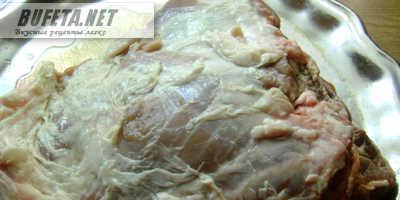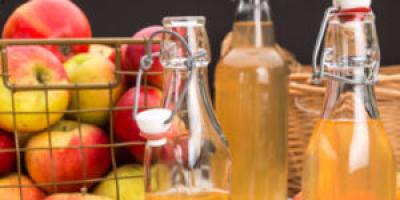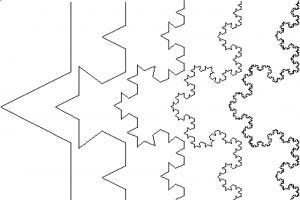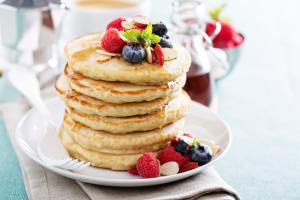Today the range of indoor flowers and plants is huge. Catalogs, online stores and magazines are full of a variety of plants with pictures, and sometimes it is difficult to focus your attention on just one thing.
In order for the plant to take root and feel good in your home, you need to know the basics of caring for it. The article is a list indoor plants and flowers alphabetically in Russian and contains basic rules of care. The descriptions are brief, but give an initial idea of a particular plant. We can say that this is a small encyclopedia or reference book in alphabetical order for each letter with brief description and photo.
A

Abutilone - evergreen non-poisonous a shrub that came to us from Brazil. Abutilone leaves appearance resemble maple leaves. Typical view The flower is shown in the photo: palmate leaves, long hanging stems, flowers drooping down. Required lighting: partial shade, moderate humidity.

Aglaonema - homemade moderately poisonous a plant that attracts gardeners with the shape of its leaves. Not difficult to care for, but with some peculiarities.
It is necessary to plant in low pots. Varieties differ in leaf color. Requires spraying, reproduces by stem petioles, prefers shade.

Aglaya is an indoor tree with leathery teardrop-shaped leaves and small yellow flowers.
Requires regular pruning and crown shaping. Reproduces by seeds, prefers shade, does not tolerate dry and parched soil.

Requires spraying, prefers bright, diffused light.

Requires moderate watering until autumn, limited in winter. It is not afraid of bright sunlight, but can live in the shade.

Aloe (agave). Homeland on the atlas is South Africa.
hardy non-capricious plant. The juice has healing properties. sunlight can be either direct or diffuse.

Achimenes - small flowering plant. The flowers are large, of various colors.
Needs spraying, lighting is bright but diffuse.
B


- golden bamboo;
- graceful bamboo;
- Simon's bamboo;
- black bamboo.

Decorative indoor plant with a variety of species. Some types fit into an egg cup, while others can take up an entire wall.
Begonia loves sunny places, belongs to the category of non-capricious plants, and is not poisonous.
IN

Wallota is an indoor plant that has two types: beautiful wallota and purple wallota. Blooms with bright colorful flowers.
Required lighting: bright diffused; watering - abundant in summer, moderate in winter.

Washingtonia filamentosa - fan palm. Feels great both in diffused bright light and in partial shade.
Washingtonia capricious, does not tolerate drafts or dry soil. Needs good drainage and abundant watering.

Decoratively blooming potted plant. It consists of long stems on which are located small size leaves and flowers.
Loves coolness and good light. Does not tolerate dry soil and hard water.

Vanda looks good both in a pot and hanging.
G

Gardenia is a flower of the madder family, demanding care. The lighting should be bright enough, but diffused.
Gardenia is thermophilic and prefers high humidity. Jasmine gardenia is used in folk medicine.

Gasteria belongs to the Asphodel family. It has fleshy leaves growing in the shape of a fan. Requires abundant watering in summer and bright lighting. In order for the leaves of the gasteria to develop evenly, it should be regularly rotated relative to the light source.

Hemanthus. The leaves are fleshy, the inflorescences are dotted with “cilia”.
Maybe blossom white and red flowers.
Requires moderate watering, prefers diffused bright light.

Gloxinia. The shape of gloxinia flowers is similar to bells.
The flowers are quite large, of different colors. High humidity and regular spraying are required.
Watering better carry out from the pallet.

- Indian;
- famous.
Both species prefer bright, indirect light. From spring to autumn it needs abundant watering.
D

Dawvalia are plants with leaves that resemble carrot leaves.
The stems look like flexible wire with small feathery leaves.
Needs to high humidity, spraying.

Didymohlena is a fern with leathery green or brown leaves.
Requires increased soil and air humidity. Needs spraying.

Decembrists - a group of forest cacti blooming in winter period.
Stems are leaf-shaped, hanging down.
The spines are short and soft.
The Decembrists are divided into three groups:
- epiphyllum;
- Gartner's ripsalidopsis;
- truncated zygocactus.

Dizygoteca - home bush with unusual appearance leaves.
It is a bush up to 1.8 meters high with thin leaves.
As for care, dizygotheca needs bright, diffused light and high humidity.
AND

Jacaranda - home plant, which is planted for its beautiful fern-like leaves.
At home, jacaranda does not bloom.

Throughout the year, jasmine needs spraying and abundant watering.

Living stones - unusual group plants consisting of two leaves fused at the base.
The color of living stones is varied.
IN period For active growth, it is advisable to take the plant out into the fresh air.
Z

Zamioculcas is a giant among indoor flowers.
The glossy, fleshy leaves can grow up to 100 centimeters in length.
Requires bright, diffuse lighting, moderate humidity and high temperature.

Zantedeschia (calla lily) is a plant that can be grown at home.
The flowers can be of different colors, resembling a funnel in shape. Leaves are heart-shaped, arrow-shaped. The light is bright, the humidity is moderate, but frequent spraying is required. Zephyranthes is popularly called upstarts.
During the flowering period, the peduncle literally stretches before our eyes and becomes ready for flowering.
Flowers can be different colors. Zephyranthes are not capricious and hardy, they require moderate watering as needed and diffused lighting.
AND

Butcher's broom acquired its name due to its rigid stems with a thorn at the end.
It has bright scarlet spherical fruits.
Feels good in the shade and in everything range room temperatures down to zero degrees.

Ixora is a tall plant with large inflorescences consisting of small flowers and leathery shiny leaves.
Requires abundant watering and spraying, needs bright light.

Iresine is used both as indoor flower, and gardening.
Is different unusual color of leaves and stem.
Requires regular spraying procedures and is a light-loving plant.

Ismene (hymenocallis) is a beautiful indoor plant that attracts with its flowers.
They have " crown"and a pleasant aroma.
Ismene is light-loving and heat-loving and requires abundant watering.
TO

Caladium is a tuberous herbaceous plant.
The most beautiful part of the caladium is its large leaves, the color of which can vary.
Young caladium needs high humidity. The lighting should be bright and watering should be plentiful.

Clerodendrum requires a lot of space because it is a fairly large plant.
Requires high humidity and diffused light.

Clivia is a plant with tall, long leaves and bright orange inflorescences.
Is pretty capricious in care. It must be kept in a cool room all year round.
Spraying is not needed, the required humidity is moderate.
For the first time, grow unusual and beautiful flowering plants steel during the era of great geographical discoveries. Today, indoor flowers, a catalog with photographs and names of which in paper form can fit in several closets, are a passion for millions of people around the world.
Photos and names of decorative indoor plants
Ornamental plants are valued for flowers of various shapes and colors, unusual foliage, and a variety of forms, including erect, creeping and hanging, herbaceous and tree-like. Indoor flowers can be of local origin and come from the most remote corners of the world. Such plants differ not only in appearance, but also in habits, they require different conditions maintenance and care.
Some people are passionate about succulents, while others are more interested in watching the growth of epiphytes. Although it is almost impossible to get acquainted with all types of home flowers, their photos and names, a short catalog will be an excellent help in choosing a “green pet” to your liking.
Abutilone
 evergreen shrub, easily tolerates crown formation, blooming from late spring to mid-autumn. Numerous varieties and hybrids of indoor flowers prefer partial shade and are responsive to care, giving their owner a mass of white, yellow, pink, crimson “bells” with a diameter of up to 10–12 cm.
evergreen shrub, easily tolerates crown formation, blooming from late spring to mid-autumn. Numerous varieties and hybrids of indoor flowers prefer partial shade and are responsive to care, giving their owner a mass of white, yellow, pink, crimson “bells” with a diameter of up to 10–12 cm.
To restore strength, the plant requires a cool winter at 12–15 degrees.
Aglaonema
 The photo and name of this homemade flower in a pot became famous thanks to the famous film “Leon”. Today, the herbaceous perennial is popular due to its variegated, leathery, broadly lanceolate-shaped foliage and its unpretentiousness when kept indoors.
The photo and name of this homemade flower in a pot became famous thanks to the famous film “Leon”. Today, the herbaceous perennial is popular due to its variegated, leathery, broadly lanceolate-shaped foliage and its unpretentiousness when kept indoors. 
In the color of the leaves different types and varieties contain not only green, white and silver tones, but also bright pink and purple colors.
Maidenhair
 Among houseplants, ferns are not uncommon. Herbaceous evergreens attract attention with their carved fronds and hardiness. One of the most popular ferns is the adiantum, whose young fronds are gracefully curled and pinkish-cream in color. In the house, the flower requires partial shade and cool maintenance in winter.
Among houseplants, ferns are not uncommon. Herbaceous evergreens attract attention with their carved fronds and hardiness. One of the most popular ferns is the adiantum, whose young fronds are gracefully curled and pinkish-cream in color. In the house, the flower requires partial shade and cool maintenance in winter.
Azalea
 These indoor plants with flowers of white, pink, and purple colors are not accepted by all gardeners. But when creating the right conditions and constant attention, medium-sized shrubs, related to , delight with generous flowering and long life at home.
These indoor plants with flowers of white, pink, and purple colors are not accepted by all gardeners. But when creating the right conditions and constant attention, medium-sized shrubs, related to , delight with generous flowering and long life at home.
Alocasia
 Among the numerous types of indoor flowers, there are many crops belonging to the Araceae family. People from the tropics of the Southern Hemisphere invariably amaze with the splendor of their greenery and variety of forms.
Among the numerous types of indoor flowers, there are many crops belonging to the Araceae family. People from the tropics of the Southern Hemisphere invariably amaze with the splendor of their greenery and variety of forms.
When you come across photos of decorative house flowers with the name “alocasia”, it is easy to notice how different these plants are in appearance. And this is not surprising, because several dozen representatives of the genus, for example, fragrant, copper-red, are unpretentious decorative foliage crops valued by amateur flower growers.
Aloe
 Unlike Alocasia, which loves moisture, all species are succulents that can survive drought thanks to the water accumulated in the succulent leaves. Tree aloe or agave are more often grown as home flowers. The plant is up to one and a half meters high and is decorated with long leaves, up to 30 cm long, set on the edges with spines.
Unlike Alocasia, which loves moisture, all species are succulents that can survive drought thanks to the water accumulated in the succulent leaves. Tree aloe or agave are more often grown as home flowers. The plant is up to one and a half meters high and is decorated with long leaves, up to 30 cm long, set on the edges with spines.
The value of the plant is in its non-capricious disposition and healing juice, which has a softening, anti-inflammatory and moisturizing effect.
Anthurium

- another representative of the extensive Araceae family, which has become a popular indoor flower. The characteristic features of the plant are an underground stem, pointed, heart-shaped dense leaves supported on tall erect petioles, and inflorescence-cobs decorated with bright spathes up to 15 centimeters long. The modified leaf is painted in bright white-pink, scarlet, greenish-purple tones.
Asparagus

Related to the culinary delicacy of asparagus, as a houseplant it has an unpretentious disposition, active growth And for a long time life in a pot. Several species of this crop, thanks to their needle-like foliage, ampelous or bush-like form, have long earned the respect and love of flower growers. Decorative effect The plants are complemented by rare but memorable flowering. The white flowers collected in clusters are small but fragrant. After they wither, red round berries are formed.
Aspidistra

Originally from Southeast Asia, this is an ornamental deciduous plant, the main attraction of which is its large, wide-lanceolate leaves up to 80 cm long. In catalogs, among photos of indoor flowers with the name “aspidistra,” you can find specimens with variegated leaves, decorated with white or yellowish stripes . The flowers of this species are inconspicuous and even invisible. Corollas of a reddish-brown or purple color appear close to the ground.
Balsam
 House flowers in pots, in the photo, are popularly called “Vanka Mokrym” or “touch-me-not.” , which has taken up residence on the windowsills of our grandmothers, loves moisture, light and warmth. Extremely unpretentious plant thanks to the presence of a mass of varieties, it is ready to please the gardener with the flowering of simple and double flowers of the most different shades.
House flowers in pots, in the photo, are popularly called “Vanka Mokrym” or “touch-me-not.” , which has taken up residence on the windowsills of our grandmothers, loves moisture, light and warmth. Extremely unpretentious plant thanks to the presence of a mass of varieties, it is ready to please the gardener with the flowering of simple and double flowers of the most different shades.
Begonia
 Begonia – rare plant, which has decorative leaves and flowers. There are more than 1,000 cultivated varietal and hybrid forms in the world that are actively used for landscaping indoors and outdoors. House flowers can differ in the way they are propagated, be bushy or hanging, bloom seasonally or constantly.
Begonia – rare plant, which has decorative leaves and flowers. There are more than 1,000 cultivated varietal and hybrid forms in the world that are actively used for landscaping indoors and outdoors. House flowers can differ in the way they are propagated, be bushy or hanging, bloom seasonally or constantly.
 Connoisseurs of decorative deciduous crops highly value the bright, unique greenery of these unpretentious, fast-growing flowers.
Connoisseurs of decorative deciduous crops highly value the bright, unique greenery of these unpretentious, fast-growing flowers.
Indoor geranium (pelargonium)
 Unpretentious, abundant and long blooming pelargonium– an ideal indoor flower for beginners. The plant easily adapts to life in an apartment, can be shaped, can be renewed if necessary and reproduces vegetatively without any problems. And a sea of varieties of various shapes and colors will help create a unique atmosphere in your home and decorate the interior.
Unpretentious, abundant and long blooming pelargonium– an ideal indoor flower for beginners. The plant easily adapts to life in an apartment, can be shaped, can be renewed if necessary and reproduces vegetatively without any problems. And a sea of varieties of various shapes and colors will help create a unique atmosphere in your home and decorate the interior.
Hibiscus
 Perennial, related to garden mallows and, in Russian conditions it has taken root as a houseplant. Large flowering crop grown as a shrub or standard tree. At proper care and sufficient nutrition, it has an enviable longevity, grows to a height of 2–2.5 meters and regularly produces spectacular red, pink, and coral flowers.
Perennial, related to garden mallows and, in Russian conditions it has taken root as a houseplant. Large flowering crop grown as a shrub or standard tree. At proper care and sufficient nutrition, it has an enviable longevity, grows to a height of 2–2.5 meters and regularly produces spectacular red, pink, and coral flowers.
Hippeastrum
 The bulbous perennial plant is popular due to its easy care and incredibly vibrant blooms. It is accompanied by the appearance of powerful, up to 70 cm tall, peduncles with several simple or double flowers. The color of the corollas depends on the variety and can be variegated, white, pink, scarlet or deep purple. The leaves form a furry basal rosette and have smooth surface and a pointed linear shape. In autumn, this type of indoor flower begins a dormant period that lasts several months and requires dry, cool storage of the bulbs.
The bulbous perennial plant is popular due to its easy care and incredibly vibrant blooms. It is accompanied by the appearance of powerful, up to 70 cm tall, peduncles with several simple or double flowers. The color of the corollas depends on the variety and can be variegated, white, pink, scarlet or deep purple. The leaves form a furry basal rosette and have smooth surface and a pointed linear shape. In autumn, this type of indoor flower begins a dormant period that lasts several months and requires dry, cool storage of the bulbs.
Gloxinia
 Velvety large bells and the same exquisite “soft” oval-shaped leaves - character traits home flower gloxinia. A tuberous plant with a winter dormant period, flowering requires long daylight hours, nutritious soil and a wide pot.
Velvety large bells and the same exquisite “soft” oval-shaped leaves - character traits home flower gloxinia. A tuberous plant with a winter dormant period, flowering requires long daylight hours, nutritious soil and a wide pot.
Above one rosette of leaves, several dozen spectacular flowers can simultaneously flaunt in all shades from white to deep purple.
Guzmania
 Guzmania attracts attention thanks to its bright foliage bordering the not so noticeable and lush inflorescence. Flowering that begins after 3 years of planting and lasts up to 3 months means imminent death mother plant, which should be replaced by root daughter rosettes.
Guzmania attracts attention thanks to its bright foliage bordering the not so noticeable and lush inflorescence. Flowering that begins after 3 years of planting and lasts up to 3 months means imminent death mother plant, which should be replaced by root daughter rosettes.
Dieffenbachia
 An ornamental deciduous plant with large leaves of different colors is relatively unpretentious, stands out for its high growth rate and numerous natural and varietal forms. As in nature, at home, the flower with the name shown in the photo in a pot should receive enough moisture, warmth, nutrition and a lot of bright, but diffused light.
An ornamental deciduous plant with large leaves of different colors is relatively unpretentious, stands out for its high growth rate and numerous natural and varietal forms. As in nature, at home, the flower with the name shown in the photo in a pot should receive enough moisture, warmth, nutrition and a lot of bright, but diffused light.
Dracaena
 Accustomed to truly “Spartan” conditions in nature, dracaena is not capricious in an apartment. Several of its varieties are grown as house flowers, eventually forming a “tree” with a bare trunk and a cap of tough green or variegated foliage at the top.
Accustomed to truly “Spartan” conditions in nature, dracaena is not capricious in an apartment. Several of its varieties are grown as house flowers, eventually forming a “tree” with a bare trunk and a cap of tough green or variegated foliage at the top.
Zamioculcas
 Zamioculcas, a tuberous plant from the Araceae family, is often found in the collections of gardeners who are keen on evergreen ornamental deciduous crops. An unpretentious indoor flower with a height of 50 to 150 cm forms several powerful, dense stems covered with glossy oval-pointed leaves. Adult plants, with proper care, form milky-white inflorescences-cobs.
Zamioculcas, a tuberous plant from the Araceae family, is often found in the collections of gardeners who are keen on evergreen ornamental deciduous crops. An unpretentious indoor flower with a height of 50 to 150 cm forms several powerful, dense stems covered with glossy oval-pointed leaves. Adult plants, with proper care, form milky-white inflorescences-cobs.
Kalanchoe
 Encyclopedias and catalogs of indoor plants and plant names often contain references to. Moreover, plants with this name are often included in the list of ornamental and medicinal crops. We are talking about different related species, interesting and remarkable in their own way.
Encyclopedias and catalogs of indoor plants and plant names often contain references to. Moreover, plants with this name are often included in the list of ornamental and medicinal crops. We are talking about different related species, interesting and remarkable in their own way.
 The common features of all varieties are unpretentiousness, rapid growth, easy propagation by all available vegetative methods and responsiveness to care.
The common features of all varieties are unpretentiousness, rapid growth, easy propagation by all available vegetative methods and responsiveness to care.
Decorative varieties amaze with the splendor of their flowering, and the viviparous species of Kalanchoe will help cope with skin and colds.
Clivia
 Clivia is an evergreen rhizomatous plant with a powerful basal rosette of long leathery leaves. During flowering, the plant produces a powerful peduncle with bright orange-yellow corollas gathered at the top into an umbrella. At home, flowers last for more than 3 weeks.
Clivia is an evergreen rhizomatous plant with a powerful basal rosette of long leathery leaves. During flowering, the plant produces a powerful peduncle with bright orange-yellow corollas gathered at the top into an umbrella. At home, flowers last for more than 3 weeks.
Maranta
 Arrowroot is a low, often creeping or ampelous perennial with decorative foliage, on one leaf blade combining shades of light and dark greens, purple and pink, white and brownish tones.
Arrowroot is a low, often creeping or ampelous perennial with decorative foliage, on one leaf blade combining shades of light and dark greens, purple and pink, white and brownish tones.
Euphorbia Mile
 Euphorbia Milya in Russia is better known as " crown of thorns" This unpretentious plant in nature reaches a height of 2 meters. In a pot, a succulent with a stiff stem covered with long thorns and a tuft of leaves at the top is much smaller. The unusual appearance of the plant is completed by small inflorescences bordered by bright bracts in scarlet, pink, yellow and white tones.
Euphorbia Milya in Russia is better known as " crown of thorns" This unpretentious plant in nature reaches a height of 2 meters. In a pot, a succulent with a stiff stem covered with long thorns and a tuft of leaves at the top is much smaller. The unusual appearance of the plant is completed by small inflorescences bordered by bright bracts in scarlet, pink, yellow and white tones.
Sansevieria
 Sansevieria or “mother-in-law’s tongue” has been a regular on window sills for many years. Unassuming home flower popular for its tough foliage, with variegated patterns or light borders.
Sansevieria or “mother-in-law’s tongue” has been a regular on window sills for many years. Unassuming home flower popular for its tough foliage, with variegated patterns or light borders. 
- one of the most common indoor flowers, but a cylindrical variety with pointed, erect leaves original form is just gaining followers.
Crassula
 The decorative house flowers in the photo owe their name to their fleshy, coin-like leaves. Crassula or " Money Tree"An excellent house plant that even a beginner can care for. In terms of endurance and easy propagation, the flower can only be compared with Kalanchoe. Even a fallen leaf soon takes root and gives rise to a new plant.
The decorative house flowers in the photo owe their name to their fleshy, coin-like leaves. Crassula or " Money Tree"An excellent house plant that even a beginner can care for. In terms of endurance and easy propagation, the flower can only be compared with Kalanchoe. Even a fallen leaf soon takes root and gives rise to a new plant.
Tradescantia
 Tradescantia is an excellent ampelous flower for home grown. The plant is characterized by rapid growth, high decorativeness, unpretentiousness and easy agricultural technology. The presence of varieties with variegated foliage of different shades allows you to create unique compositions using one crop. It is moisture-loving, amenable to crown formation and takes root easily, in water or on the ground.
Tradescantia is an excellent ampelous flower for home grown. The plant is characterized by rapid growth, high decorativeness, unpretentiousness and easy agricultural technology. The presence of varieties with variegated foliage of different shades allows you to create unique compositions using one crop. It is moisture-loving, amenable to crown formation and takes root easily, in water or on the ground.
Phalaenopsis
 Phalaenopsis or "butterfly-like" flower. This most popular orchid in nature is an epiphyte. At home, the flower is content with a special pot and substrate, unlike ordinary soil. Relatively easy care for phalaenopsis allows the novice orchid lover to master all the features of these ornamental plants.
Phalaenopsis or "butterfly-like" flower. This most popular orchid in nature is an epiphyte. At home, the flower is content with a special pot and substrate, unlike ordinary soil. Relatively easy care for phalaenopsis allows the novice orchid lover to master all the features of these ornamental plants.
Usambara violet (Saintpaulia)
 At first sight, the Usambara violet captivates with the appearance of its fleecy foliage, gathered in lush rosettes, above which simple, semi- or double flowers of the most bizarre shapes and colors reign with a bright cap. Modern varieties of Saintpaulia number in the thousands and represent giant and dwarf plants, plain and variegated flowers, green leaves and greenery with white or pink edging.
At first sight, the Usambara violet captivates with the appearance of its fleecy foliage, gathered in lush rosettes, above which simple, semi- or double flowers of the most bizarre shapes and colors reign with a bright cap. Modern varieties of Saintpaulia number in the thousands and represent giant and dwarf plants, plain and variegated flowers, green leaves and greenery with white or pink edging.
Ficus
 Catalog of indoor flowers with photographs and names various types and varieties of ficus can be published as a separate book. Today there are almost a thousand varieties of this plant; several dozen are grown in culture, in the form of a bush, tree, ground cover and even hanging specimens. The most widespread is rubber.
Catalog of indoor flowers with photographs and names various types and varieties of ficus can be published as a separate book. Today there are almost a thousand varieties of this plant; several dozen are grown in culture, in the form of a bush, tree, ground cover and even hanging specimens. The most widespread is rubber.
Chlorophytum
 – the leader among plants in terms of air purification ability. But this is not the only reason for the popularity of indoor flowers. An unpretentious and easily propagated indoor herbaceous perennial forms lush rosettes of pointed-lanceolate leaves of green or variegated color. The peculiarity of the culture is the flowers and daughter rosettes of the plant formed on long hanging shoots.
– the leader among plants in terms of air purification ability. But this is not the only reason for the popularity of indoor flowers. An unpretentious and easily propagated indoor herbaceous perennial forms lush rosettes of pointed-lanceolate leaves of green or variegated color. The peculiarity of the culture is the flowers and daughter rosettes of the plant formed on long hanging shoots.
Hoya
 Among domestic vines, hoya occupies one of the first places in beauty and popularity. An evergreen perennial with long stems covered with dense “waxy” leaves and umbrella-shaped inflorescences of fragrant star-shaped flowers, it leaves no one indifferent. At the same time, ivy growing on a suitable surface does not need special care and is excellent for keeping at home.
Among domestic vines, hoya occupies one of the first places in beauty and popularity. An evergreen perennial with long stems covered with dense “waxy” leaves and umbrella-shaped inflorescences of fragrant star-shaped flowers, it leaves no one indifferent. At the same time, ivy growing on a suitable surface does not need special care and is excellent for keeping at home.
Video: 70 indoor plants in my interior
One of the main elements of any garden are flowers. They make it beautiful, bright and memorable. Their variety is so great that making a choice sometimes becomes very difficult.
This page is about, as well as describing the planting and flowering period of these plants. You can also familiarize yourself with the catalog of indoor plants. And we'll start with how to use a garden flower catalog to select the best specimens for your site.
Selecting from a catalog of garden flowers for your garden |
|
|
Location– the main criterion that is responsible for the life and active development of plants. If you plant light-loving flowers in a dark place, then they will not be able to delight their owners with their beauty for a long time. This means you need to know in advance the insolation in your own area and the attitude of your favorite plants to light. Therefore, before selecting plants, decide which area you want to plant with garden flowers. After this selection, you can move on to the next point. |
 |
|
Features of colors. According to morphology, flowers are divided into annual (marigolds, petunias) and perennial (hostas, daisies, lilies). The difference lies in the different periods of their life and development. The first type is cheaper, but it grows only one year; the next year it is necessary to purchase plant material again. Using the catalog search form, you can sort flowers by life expectancy. Perennials can be planted only once, and they will delight their owners every year. The second type is more expensive than the first. |
 |
|
Origin. It is better to plant native plants that are perfectly adapted to existing conditions. Of course, no one has canceled experiments; you can try growing exotics. |
 |
| Plant size is very important. If a mixborder is arranged in the garden, then the largest and tallest plants should be planted at the very end, and small and abundantly flowering plants should be planted at the beginning. In my The catalog of garden flowers contains photographs, thanks to which you can navigate by the size of the plant. All seed packages usually indicate the sizes of interest. If you buy seedlings, it is better to find out all the necessary data from reliable sources. |  |
|
Color spectrum- the key to a beautiful and delightful garden. You can create certain style solutions thanks to plant color combinations. Contrasting monochrome flower beds are beautiful. The main thing is to choose the right varieties and types. The catalog below will help you search for garden flowers by various criteria inflorescence color. |
 |
Garden - flowers catalog with photos and names
The decoration of any garden includes some bulbous plants that bloom in spring - these are crocuses, tulips, hyacinths, muscari and others. Summer-flowering bulbs include lilies and irises. To make your flower garden bright and beautiful, you can plant violets, salvias, ageratums, marigolds, peonies, hostas, some varieties of decorative onions, amaryllis, daffodils, petunias, and many other plants. Now try to choose garden flowers yourself - a catalog with photos and names will help you.








